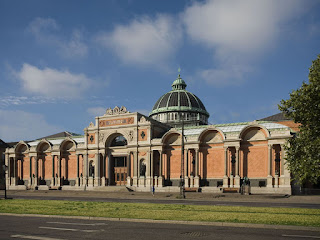Serving as an oriental restaurant and hotel, Nimb is maybe the most outstanding architectural piece in the Tivoli Gardens, just opposite the Central Station.
- Built: 1909
- Style: historicist (Moorish inspired)
- Website: www.nimb.dk
Background
Tivoli gardens (amusement park) was opened in 1843 in Copenhagen. Already back then there was a 'bazaar area' with Chinese cuisine in the place of the present Nimb. When a fire broke out in 1862 this oriental part of the Tivoli burnt down. The new building in oriental-Moorish style was built in 1909 after the plans of the architect and at the same time also Tivoli director, Knud Arne Petersen.
But why Nimb?
The name Nimb refers to a family that has a long tradition with gastronomy in Copenhagen. Willam and Louise Nimb started their first restaurant in Tivoli Gardens, near the lake already in 1877. This restaurant, was called DIVAN 2 or as many city dwellers referred to it 'Nimb's Terrasse'.
A family business
The two daughters, Henriette and Serina Nimb, took an active part in running the restaurant. Henriette became chef and Serina was working as the matron and was responsible for that the house was in order.
In 1930, thanks to the Danish National Broadcasting Company (DR), Nimb became famous across the country because of the live broadcasts of contemporary dance music.
Architecture
Nimb was built in the historical-Moorish-arab style, that makes the palace look like and enchanted middle-east palace from the One Thousand and One Nights fairy tale. The facade arabesques are made of Italian marble stucco. Inside the building, Dinnensen wooden floors and Oland granite adds a lot to the oriental atmosphere.





